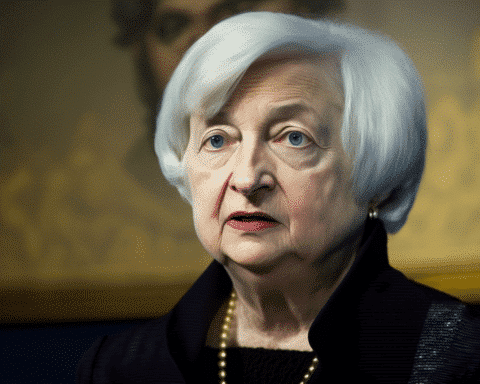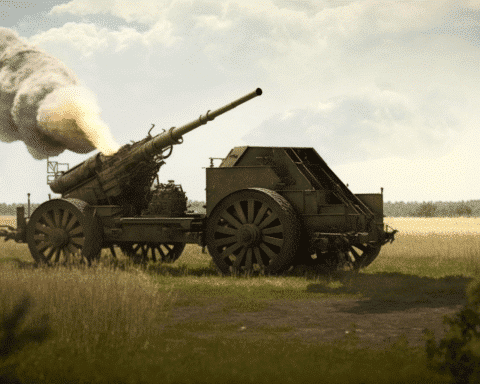In the predawn hours of Thursday amidst Nevada’s Black Rock Desert, a towering 26-foot by 13-foot box was set aflame. As the flames soared upwards, the wooden monolith burned for over 20 minutes, finally crumbling to reveal its core: a majestic steel phoenix symbolizing Ukraine’s enduring spirit amidst conflict.
While the Burning Man festival traditionally witnesses the ignition of a wooden icon, numerous other artworks are also crafted to meet a fiery end after their temporary existence.
The installation named “Phoenix” was brought to life by 14 creative minds from Kyiv, Ukraine, and Chicago. As the flames readied to consume the piece, echoes of explosions and air raid sirens surrounded the area, punctuated by an unexpected operatic tribute sung in Ukrainian.
Ellen Lopatkina, the Ukrainian-American spearhead of the project, later conveyed to CNN that the piece depicted the “rebirth of our identity”. She noted the profound emotional responses it invoked, saying, “The revelations that emerge from destruction resonated profoundly with onlookers.”
Symbols of Resilience
In the initial days of Burning Man, attendees, or “burners”, speculated about the secret encased within the enigmatic structure.
The wooden edifice symbolized more than just art. It mirrored the protective barriers constructed around Ukraine’s monuments to shield them from Russian bombardment.
The minimalist phoenix, representing rebirth and strength, morphed in appearance depending on one’s viewpoint. It also evoked Ukraine’s emblematic trident adopted post-independence in 1992.
Oleksiy Sai, one of “Phoenix”’s creators, emphasized Ukraine’s rich cultural identity in a video chat from Kyiv. Not present during the burning, Sai monitored the event via SpaceX’s Starlink internet. Having previously contributed to Burning Man and teamed up with activist Vitaliy Deynega and artist Bogdana Kosmina for this piece, Sai remarked on the shielded statues in Kyiv, symbolic of a nation’s resilience.
A Beacon of Resilience
From its inception in 1986, with a mere 20 attendees in San Francisco, Burning Man has exploded into an anticipated gathering with projections of 87,000 participants this year.
Sai and Kosima viewed “Phoenix” as a beacon to shine a light on Ukraine’s struggles, stressing that Ukrainians are proactively rebuilding their nation.
Post-burn, the location continued to smoulder, Lopatkina shared. Over subsequent days, the phoenix will be enveloped in smoke while fiery visuals illuminate its form.
Lopatkina voiced her aspirations for the artwork to continue highlighting Ukraine’s plight during times when global attention wanes, asserting, “Ukraine remains a beacon of creativity and innovation in Europe, even amidst adversity.”
The Phoenix installation at Burning Man isn’t merely a symbol of art but a testament to the indomitable spirit of a nation under siege. It serves as a powerful reminder that even in the face of adversity, the flames of resilience, creativity, and hope can never be extinguished. In the vast expanse of the Black Rock Desert, as thousands watched a symbol burn and rise, they bore witness to Ukraine’s message to the world: its heart beats strong, its spirit unyielding, and its artistry undeterred.




